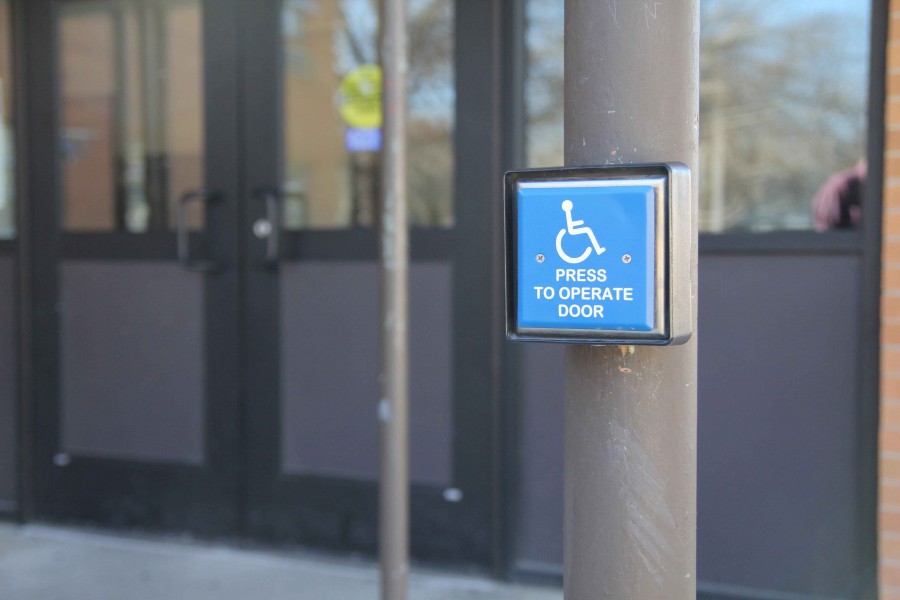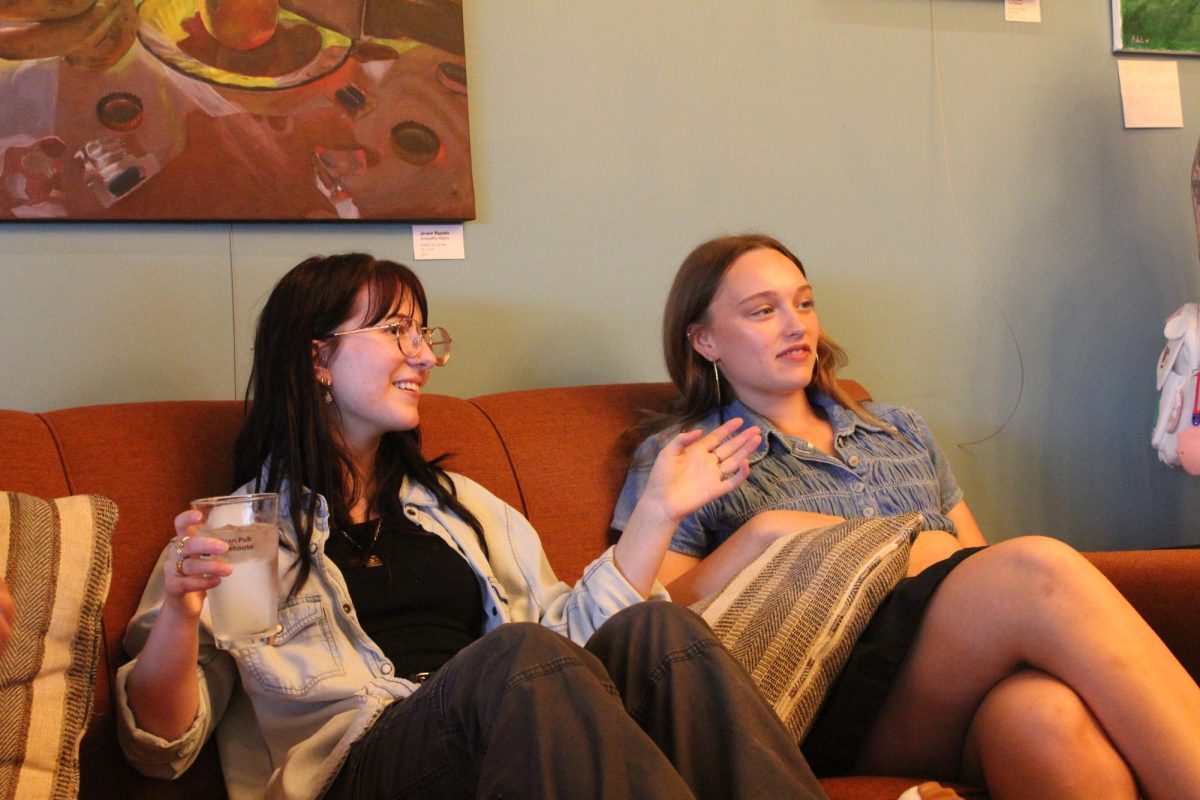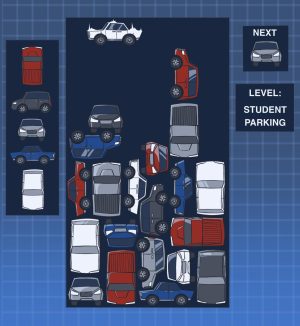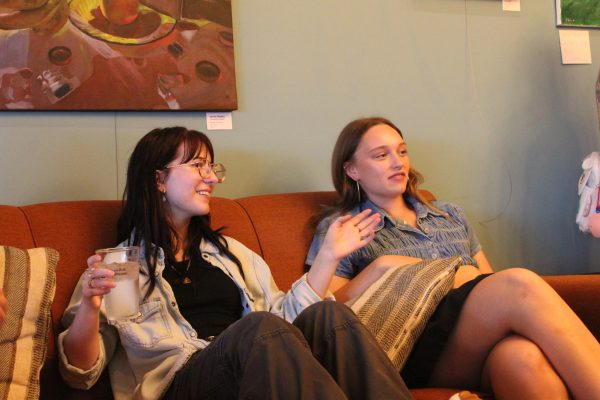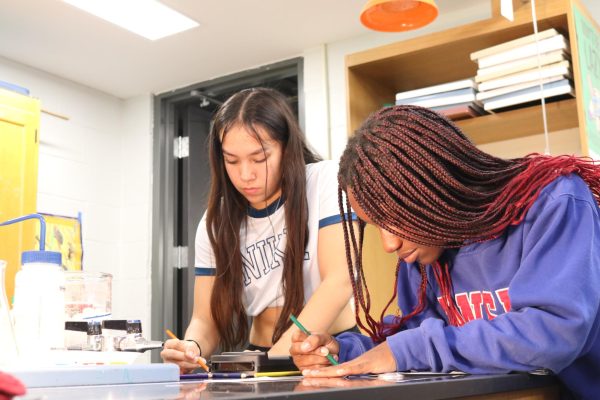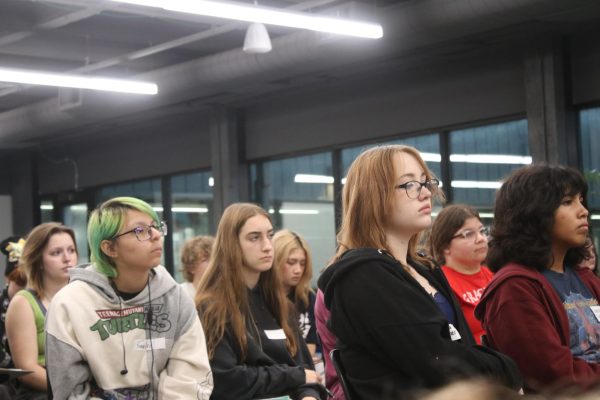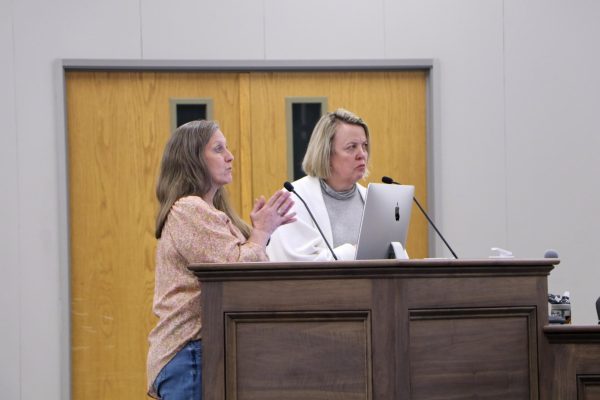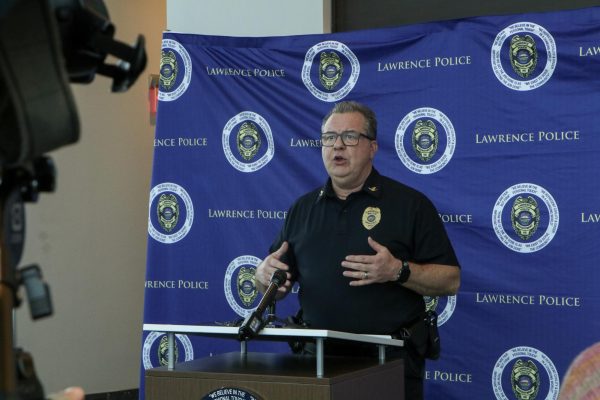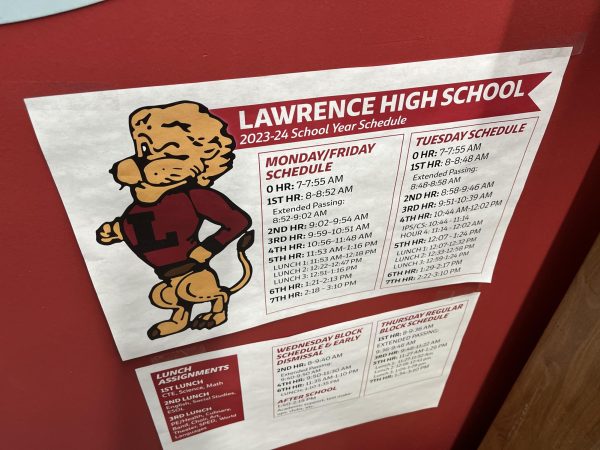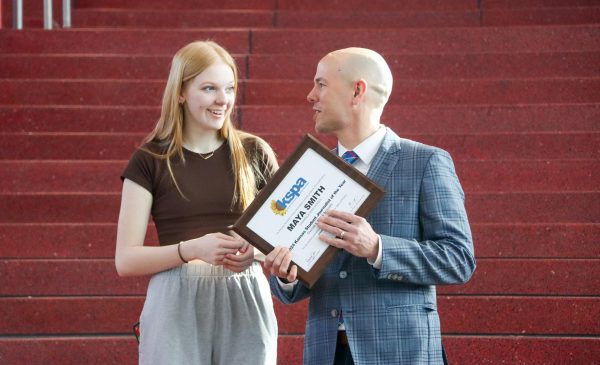School facilities don’t measure up for people with disabilities
Outdated building causes inconvienience for people with physical disabilities
Handicap buttons on the interior and exterior of entrances allow students with physical disabilities to navigate campus. However, some of the buttons have stopped working throughout the year.
March 23, 2016
The hallways are narrow and students pack the staircases during passing period as they cram through on their way to their next classes.
But for students like sophomore Josh Evans, the only way to get to many of his classes is the elevator, located on the end of science hallway.
“They usually work good until they break down,” he said.
And it does break down. At the beginning of this school year, the elevator in the main building stopped working off and on and wasn’t consistently working during the first two months of school. While most students were not affected, students like Evans, who rely on the elevator to get from class to class, were confronted with serious issues.
“I missed like three or four of my classes,” he said about a day when the elevator stopped working while he was upstairs.
Although the main building elevator has consistently worked since September, many challenges remain in navigating the LHS campus for students with physical disabilities. Classroom doors are difficult to open; bathrooms aren’t accessible; some outer doors lack working electric entrances or those buttons aren’t working; and moving between three buildings during winter months is difficult.
This is a result of the age of the building, disunity of new additions with the original floorplan and more general outdated designs. Because of those issues, much of the campus doesn’t meet standards established by the Americans with Disabilities Act in 1991, although the school isn’t in trouble because it’s grandfathered in.
Yet, many of the problems could be addressed when the district follows through on the long-term planning for the LHS building that is in the works.
“There are things in this building that are flat-out not ADA-compliant in that kind of basic sense of the word,” said assistant principal Mike Norris, who manages campus facilities. “I am not saying the building is out of compliance because there exceptions made to ADA compliance…Age of building, construction going on, stuff like that. Those sorts of things do factor in.”
Although many of the issues that make the building less accessible to people with disabilities may seem insignificant to someone who is able-bodied, they can have significant effects on those who have difficulty navigating the building on their own.
“Facilities that are not accessible can have a very negative effect on the lives of people with disabilities,” said Daniel Brown and Bob Mikesic of Independence, INC, a local organization that provides resources for people with disabilities. “In many cases, this may mean that the person with a disability is excluded from receiving the same level or quality of services as someone without a disability.”
When school facilities aren’t accessible, students are often unable to navigate independently. Although paraeducators help students who need it, when places in the building are non-accessible, students have to rely on paras rather than be independent.
For some students, getting through doors can be a literal barrier to getting to class. Since the building has several additions and doors were installed at different points in time, many of them have different widths, made of different materials and have hinges on different sides. All of the inconsistencies can make it difficult for someone with a disability to enter and exit classrooms.
Many of the handles on doors require twisting, which is impossible for some people with muscular disabilities who cannot grasp or twist the handle. For example, room 132, which hosts many students with physical disabilities, has a twist handle.
The doors themselves can also be too heavy for someone with a disability to open by themselves. This is an issue for room 100, which hosts classes with many students with physical disabilities.
All of the classroom doors will be replaced this summer, and they will include paddle or stationary bar handles. Because of the age of the building, the widths of some doors will still be narrower than current building standards.
Although the new doors will make classrooms accessible to some students, some with more severe handicaps would not be able to open a door regardless of any new specifications.
To make entryways accessible to those who cannot open doors, electric buttons are on both the interior and exterior of many entrances. However, these are only effective when they work.
For the entire first semester, the handicap button on room 100 was not working. Since the room is central for many students with disabilities, this took away autonomy from students for a large part of their school day.
Because both the interior and exterior buttons on the door in the art wing work, all of the career and technical education classrooms that aren’t accessible from majority of the main building can be accessed.
There are also places in the building that could be made accessible to students by putting in buttons. As it is, students with disabilities cannot open the library or gymnasium doors on their own.
However, even if the buttons are not working or if there isn’t one at all, students with disabilities always have the help of their paras or teachers who they’re with.
As a student who navigates the building in an electric wheelchair, Evans said he generally does not have a hard time getting to and from class.
He has five classes a day and said other students are good about getting out of his path during passing periods.
However, at the beginning of the year when the elevator broke down periodically, he had no way of getting back to the main level. And Evans was not the only student affected.
“I had kids missing their core classes because the elevator wasn’t working,” special education teacher Heidi Woods said.
While the main building elevator was fixed last semester, the elevator issue in the annex is ongoing. The elevator in annex is old and cramped.
The annex elevator is so unfit for use that teachers and paras almost never have students ride in it. Not only is it unreliable, but many wheelchairs, particularly larger motorized ones, would not fit inside of it.
Students with disabilities can usually have their schedules arranged so they do not have to go to the annex at all. However, that hinders them from taking classes like debate, which is upstairs in the annex.
There are special education offices upstairs in the annex as well that students with disabilities cannot easily access. Lindsay Buck, who is a case manager for the special education department, said the case managers often have to take on students not by their grade in high school, as their supposed to, but by who can access what rooms.
Norris said that students with physical disabilities can do debate, but if they enroll in the class, the entire class would have to move to an accessible room for that hour.
Until late last semester, the annex was even less handicap accessible: none of the bathrooms were ADA-compliant. Over winter break, however, a larger stall was put in and the bathrooms were redone to better accommodate students in wheelchairs.
When students with disabilities enroll in classes, building staff ensures there is a handicap-accessible bathroom in close proximity to all of the rooms they will be in. For example, the bathroom in the math hallway upstairs was switched from a male to a female bathroom when a student needed an accessible bathroom nearby.
Norris also noted that because of the age of the building, not every bathroom in the school needs to be handicap-accessible, because the cost of redoing every bathroom to be ADA-compliant would be untenable.
However, some work could still be done. The bathroom by room 132, despite having a handicap-accessible stall, has a door with a twist handle and is structurally difficult to navigate if you have a physical disability. Many of the students who have class in room 132 go halfway across the building to the nurse to use that bathroom instead.
Most students, disabled or not, agree that the building is crowded. An unusually-large freshman class brought the student population to more than 1,600 students, which makes hallways and classrooms more cramped than previous years.
This, added to rising class sizes caused by funding cuts at the state level, means classrooms are physically closer to capacity and harder to navigate. Especially for people in wheelchairs.
Woods said that students with disabilities who are in crowded classrooms often have to sit near the door, and often times could not get across the room if they needed to.
“The reality is that class sizes are getting bigger, and they’re getting bigger in spaces that are fixed,” Norris said. “We have increasing class sizes, we have facilities that legally and philosophically are becoming more inclusive. Once we have more students with accessibility issues in the schools in a building that way built 60 years ago, and those weren’t issues then. Those are the kinds of things that are hopefully going to be addressed through long-range planning.”
Earlier this year, the district announced a long-term planning initiative for the LHS building. Although no specific plans or timeline has been laid out, any new additions or renovations will need to comply with ADA standards.
Norris said that one of the largest challenges to ADA compliance will be addressed this summer by replacing classroom doors. He also said that the new front entrance will be more accessible for wheelchairs because the curb is being replaced with a shallow slope, which is favorable to the older curb, where people with disabilities had to enter the sidewalk all the way by the music doorway opposed the next to the front entrance.
“As we do this long-term planning…now that we’re talking about significant structural changes to the school, that at that point, some of the other parts of ADA are going to start kicking and they’re really going to start thinking about ADA compliance in a bigger sense.”
Although older buildings like LHS are given passes for some failure to comply with modern building standards, once enough construction is planned, the entire building will be subject to the most recent ADA standards, which were passed in 2010.
Evans said that the building would be more accessible if there was more than one way for students to move between floors.
“One of the things would be, in case the elevator broke down and kids were stuck [upstairs], somehow put a ramp by the stairs,” he said.
Although there is no timeline or definitive plan for the building, Norris said that with a large sum of money, which would likely come from the passage of another bond issue, real strides could be made toward adequate accessibility.
“With real money you can start moving wall, and you can start reconfiguring space,” he said. “But that’s not a $20,000 project over the summer, that’s part of a $40 million dollar project to renovate an entire school.”
Until then, students, teachers and administrators will be working with what they have.
“It’s a pretty careful balancing act,” Norris said. “At no point does ADA even pretend to offer complete autonomy and complete and complete self-sufficiency for students with handicaps or other accessibility issues. They can’t. There is no possible way to do it, because at what point do you draw that line?”



